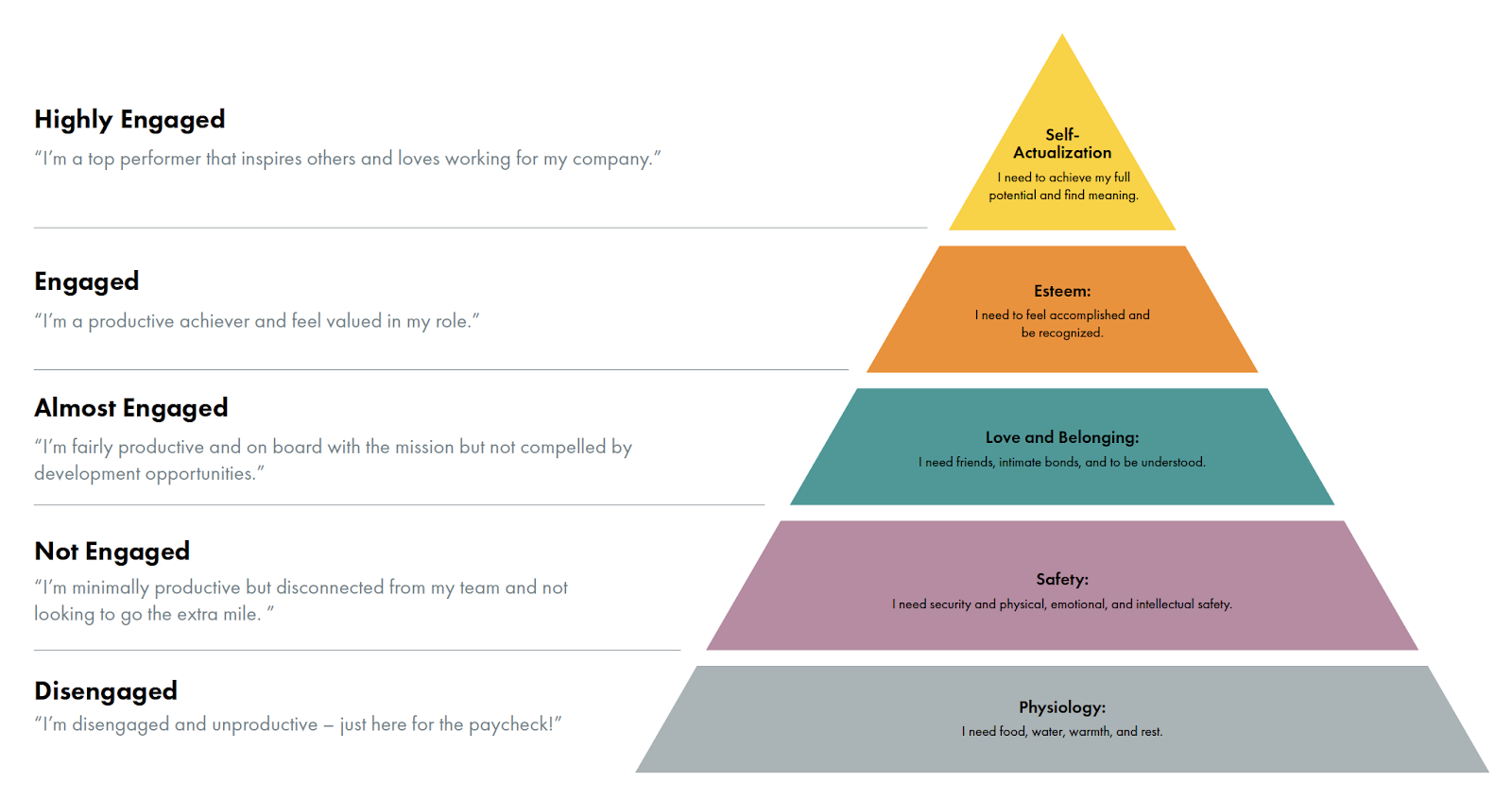With employees spread all over the map and markets in flux, it’s no surprise that business stakeholders are concerned about worker productivity. The knee-jerk reaction to this may amount to mandates to “power through,” pushing employees to stoically meet unrealistically high bars and deadlines.
However, behavioral research shows us that this approach is, well, counterproductive to productivity. Psychologist Abraham Maslow, famous for his theory of human motivation, illustrates the point well. The model tells us that humans must have a fundamental sense of safety and security in order to engage in higher pursuits. That is, when employees’ basic needs are threatened, productivity can plummet.
Imagine that you’re writing a novel when you’re suddenly evicted from your home. You’d almost certainly put your novel on hold until you could sort out a place to live. The chart below shows how employee productivity relates to Maslow’s Hierarchy of Needs. It outlines the level of engagement you can expect from people when they experience threats on each level of the hierarchy.
Maslow’s Hierarchy of Needs and Human Productivity

From this, we can understand that productivity rises as we progress through Maslow’s Hierarchy of Needs. And the more basic the need that’s threatened, the greater effect it has on our productivity in the office.
During this time, it’s reasonable to expect that employees are feeling threatened all the way throughout the hierarchy. Many are experiencing physiological threats as their work hours are cut, or they endure the stress of increased responsibility at home and on the job. Safety needs are in jeopardy as workers fear for their health and deal with the isolating effects of the pandemic.
Given that these most basic needs are in peril, now is the time to take a step back and provide the right kind of support to get leaders back on their feet and driving growth again. Moreover, focusing on well-being is not just the right thing to do – research shows it’s good for business, too! According to The Institute for Corporate Productivity:
“Leaders who aren’t committed to well-being can impede results. Low-performance organizations are 2x more likely than their high-performing counterparts to have leaders (at all levels) who do not understand the business value of wellness/wellbeing programs.”
For tips on how to give leaders the support they need, read our helpful guide for learning leaders.
A free guide for learning leaders like you
If you found this post helpful, there’s more to help you get back to business as usual. Get actionable recommendations for addressing key trends shaping leadership development today by downloading Building the World’s Best Post-Pandemic Leaders.
Just some of what you’ll learn:
- Industry-wide effects of COVID-19
- How learning leaders like you are coping with change and uncertainty
- Top skills and priorities for leadership in the Next Normal
- 4 key trends you’ll need to address in 2021
- How you can address these challenges without going over budget
